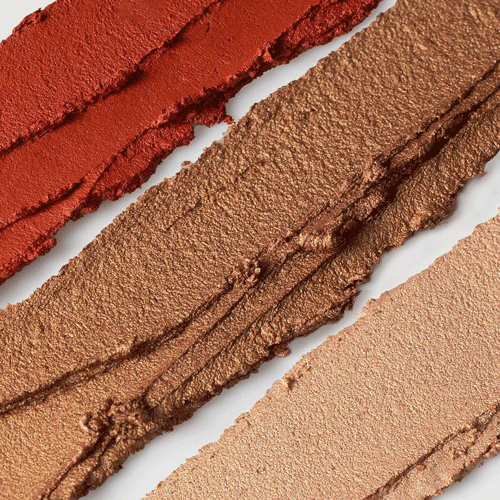
Beyond Clean Beauty: How Ethical Beauty Trends Are Changing the Industry in 2025
The beauty industry is undergoing a major shift. While the "clean beauty" movement focused on non-toxic ingredients, 2025 is seeing a rise in ethical beauty—a more holistic approach that considers sustainability, cruelty-free practices, and fair sourcing.
Consumers are no longer just looking for products that are good for their skin; they want products that are also good for the planet, animals, and communities. Brands are being held accountable, and those that fail to prioritise ethics are being left behind.
So, what’s next for ethical beauty? Here’s how the industry is changing in 2025.
Key Summary
- Vegan & Cruelty-Free as the Standard – More brands are eliminating animal-derived ingredients and animal testing.
- Waterless & Zero-Waste Beauty – Solid bars, concentrates, and refillable products are becoming mainstream.
- Biodegradable & Plastic-Free Packaging – Brands are moving beyond recycling to waste-free solutions.
- Ethical Sourcing & Fair Trade Ingredients – Transparency in sourcing and fair wages for workers are key.
- Minimalist & Multi-Use Products – Simplified beauty routines help reduce overconsumption and waste.
The Biggest Ethical Beauty Trends of 2025
1. Vegan & Cruelty-Free as the Standard
For years, cruelty-free and vegan beauty were niche markets, but in 2025, they’re becoming the industry norm. Consumers are demanding transparency, and brands that still use animal-derived ingredients like beeswax, carmine (crushed beetles for red pigment), and lanolin are facing backlash.
🐰 What’s changing?
- More brands are ditching animal testing completely.
- Vegan formulas are replacing traditional beauty staples without compromising performance.
- Leaping Bunny and PETA certifications are now key selling points for ethical brands.
🚩 What to watch out for: Some brands still use misleading labels—"cruelty-free" does not always mean "vegan." Always check ingredient lists and certifications.
2. Waterless & Zero-Waste Beauty
Water is becoming a luxury resource, and the beauty industry is adapting. Waterless products (like solid shampoo bars, powdered cleansers, and concentrated skincare) are not only reducing water waste but also cutting down on plastic packaging.
🌍 Why it matters:
- Traditional beauty products contain up to 90% water, increasing shipping weight and carbon footprint.
- Waterless formulas last longer and require less packaging.
- Refillable beauty products are replacing single-use plastics.
💡 Brands leading the way: Dew Mighty (solid serums), Meow Meow Tweet (Pow(d)erful Hair Care), and Axiology (plastic-free makeup). AND/OR SAPPHO New Paradigm (PFAS makeup)
3. Biodegradable & Plastic-Free Packaging
With over 120 billion units of packaging produced by the beauty industry every year, the need for zero-waste alternatives has never been greater. In 2025, brands are going beyond recycling—they’re making fully biodegradable, compostable, or reusable packaging.
♻️ Sustainable packaging innovations include:
- Mushroom-based and seaweed-derived packaging.
- Refill stations in beauty stores to eliminate single-use containers.
- Glass, aluminium, and bamboo replacing plastic packaging.
🚩 Greenwashing alert: Some brands claim to use “recyclable” plastic, but only 9% of plastic actually gets recycled. Look for brands offering refillable or compostable solutions instead.
4. Ethical Sourcing & Fair Trade Ingredients
More consumers are realising that ethics go beyond packaging. Ingredients like palm oil, mica, and shea butter often come from exploitative labour conditions. Ethical beauty brands are focusing on fair trade sourcing, ethical supply chains, and full transparency.
🌱 What to look for:
- Certified Fair Trade or Rainforest Alliance ingredients.
- Brands that provide traceability on where and how ingredients are sourced.
- Companies investing in community support programs for workers.
💡 Brands leading the way: SkinOwl (ethical mica sourcing), au Naturale (Palm Done Right), and Yarok (giving back via Pachamama Alliance).
5. Minimalist & Multi-Use Products
In 2025, less is more. Instead of complicated 10-step skincare routines and overflowing makeup bags, beauty lovers are choosing multi-use products that serve multiple purposes.
💄 Why minimalist beauty is trending:
- Reduces overconsumption and unnecessary waste.
- Saves money by investing in fewer, higher-quality products.
- Travel-friendly and great for on-the-go lifestyles.
💡 Examples of multi-use products:
- Lip-to-cheek balms that replace multiple makeup products.
- Cleansing balms that double as moisturisers.
- All-in-one serums that hydrate, brighten, and protect.
🚩 What to avoid: Some brands market "all-in-one" products that are full of fillers and unnecessary ingredients. Always check ingredient lists for clean, effective formulas.
Why These Trends Matter
The shift toward ethical beauty isn’t just a passing trend—it’s a necessary step toward a more sustainable future. The beauty industry has historically been one of the biggest contributors to plastic waste, unethical labour practices, and environmental damage. These new trends are actively changing that.
🌏 The impact of ethical beauty in 2025:
✅ Less plastic waste and packaging pollution.
✅ More ethical treatment of workers and fair wages.
✅ A shift away from animal testing and animal-derived ingredients.
✅ Smarter consumption habits that reduce excess waste.
By supporting ethical beauty brands, consumers are driving real industry change.
How to Shop Ethically in 2025
Want to make sure your beauty routine aligns with ethical values? Here are some tips:
✔ Check certifications – Look for Fair Trade, Leaping Bunny (cruelty-free), and Rainforest Alliance seals.
✔ Read ingredient lists – Stuck on this point as “responsibly sourced Palm Oil is found in au Naturale. Perhaps we can use Mineral Oils? , synthetic fragrances, and non-biodegradable ingredients.
✔ Choose refillable or plastic-free packaging – Support brands that offer sustainable alternatives.
✔ Research a brand’s ethical policies – Transparency matters. If a brand is vague about sourcing, it may not be truly ethical.
✔ Support indie brands – Many small beauty brands prioritise sustainability more than mainstream corporations.
FAQs on Ethical Beauty
Q: What’s the difference between clean beauty and ethical beauty?
Clean beauty focuses on non-toxic ingredients, while ethical beauty includes sustainability, fair trade, cruelty-free practices, and eco-friendly packaging.
Q: Are all cruelty-free brands also vegan?
No. Some cruelty-free brands still use animal-derived ingredients like beeswax, lanolin, or carmine. Look for vegan certifications to be sure.
Q: Is zero-waste beauty really possible?
While completely zero-waste can be difficult, brands are making huge strides with compostable, refillable, and plastic-free solutions.
Q: Which brands are leading ethical beauty in 2025?
Some standout ethical beauty brands include Meow Meow Tweet, SAPPHO New Paradigm, Noto Botanics, Dew Mighty, Axiology, and Veganologie.
Conclusion
Ethical beauty is more than just a trend—it’s the future of the industry. With a growing focus on vegan, cruelty-free, zero-waste, and fair trade practices, brands are being forced to rethink their impact.
By making conscious choices and supporting ethical beauty brands, consumers are pushing the industry toward a more sustainable future—one product at a time. 💚
This guide is written by The V Spot, your go-to destination for sustainable, ethical, and vegan beauty in Australia. Explore our carefully curated collection of eco-friendly brands at thevspot.com.au. 🌿

